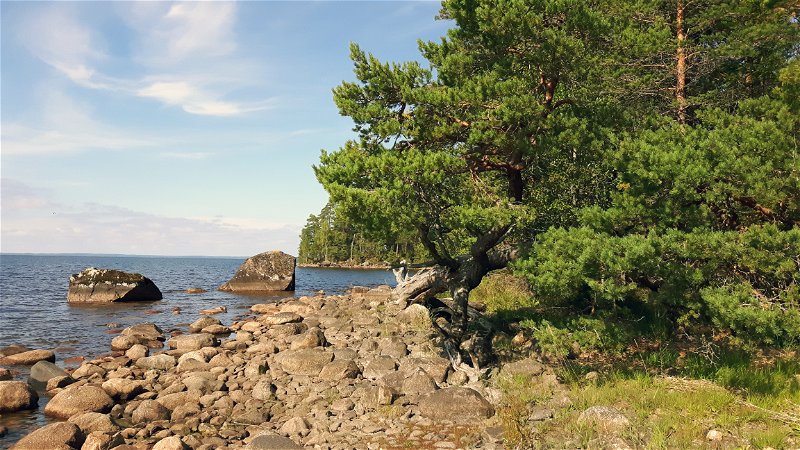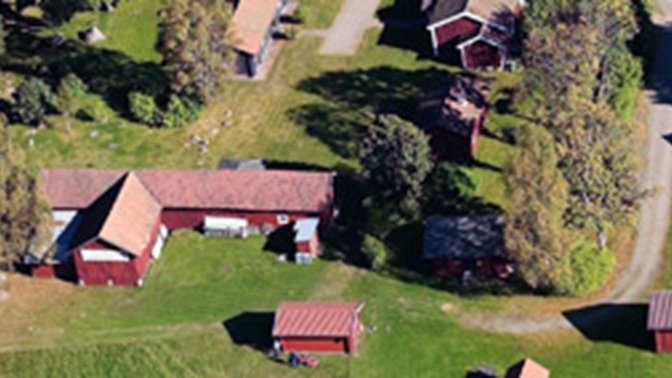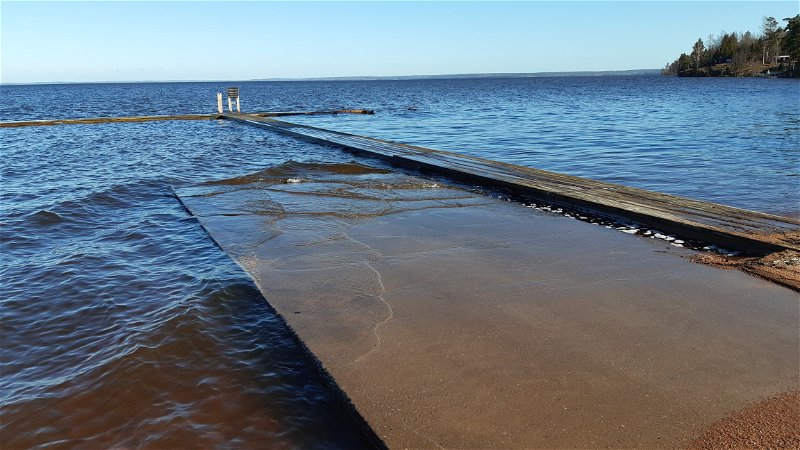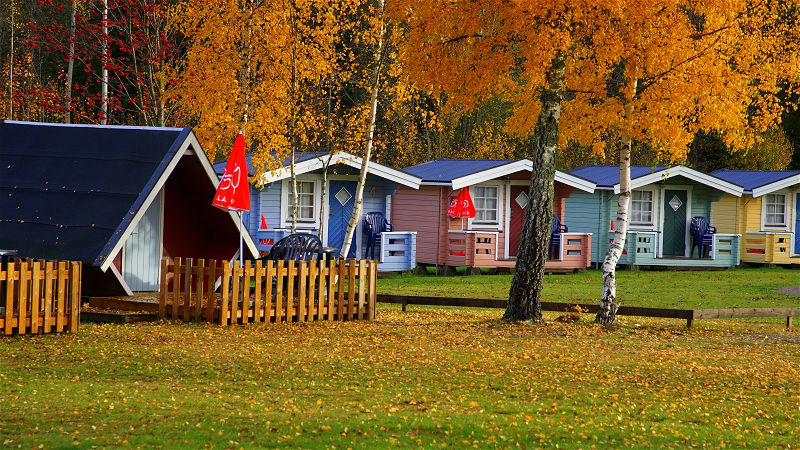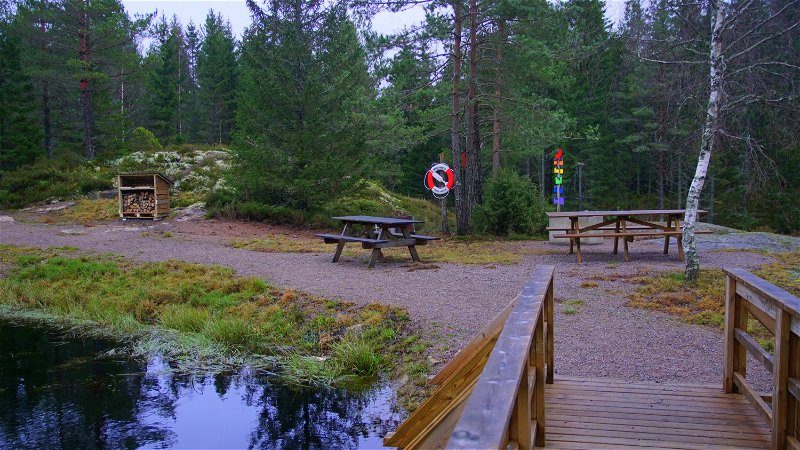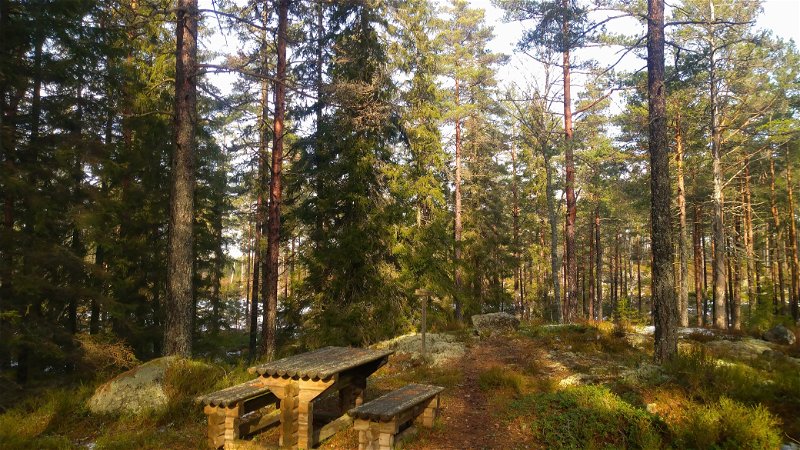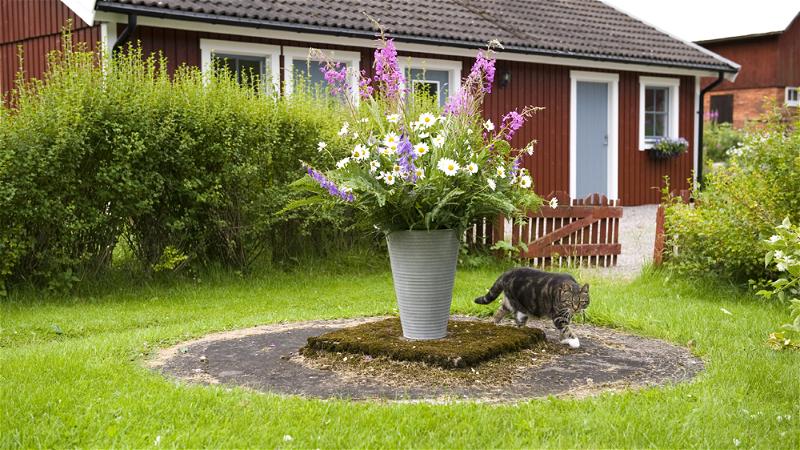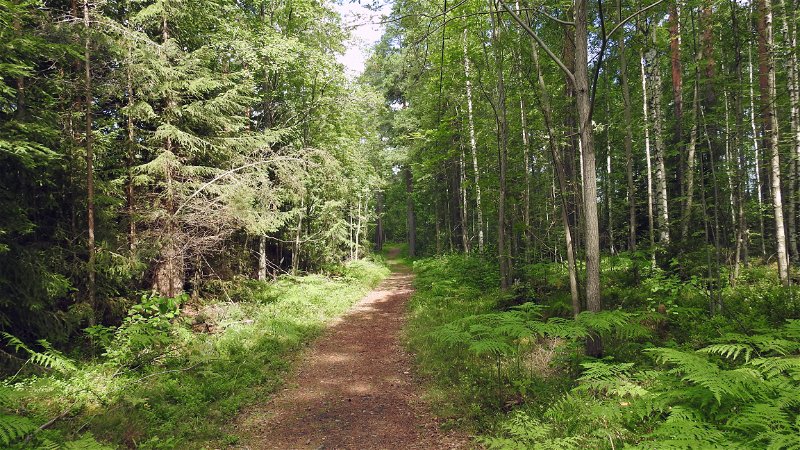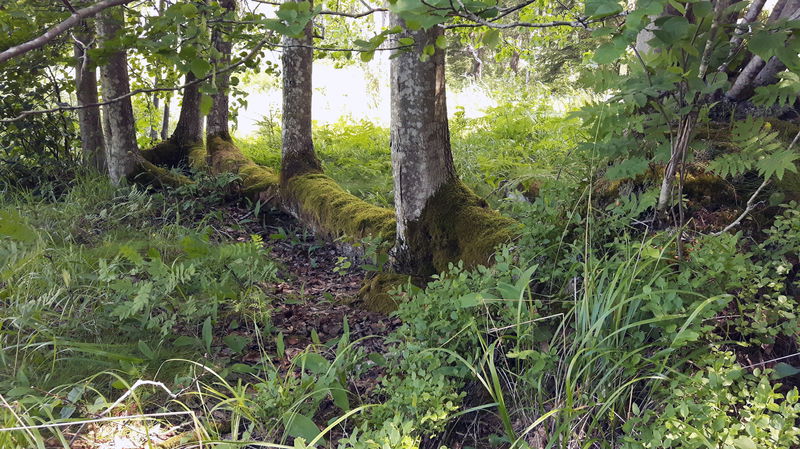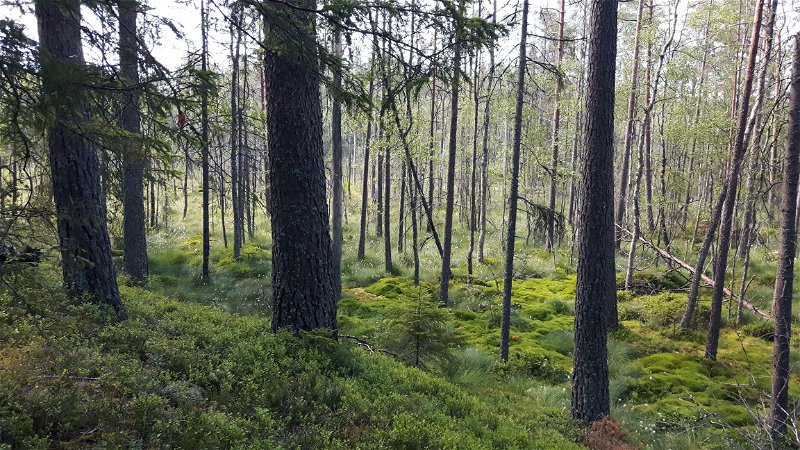The road leads to a protected bay with a long beach in both directions. On the beach you will find mature birches, and here and there reeds grow out of the clear blue water. The edge of the beach, which borders a deciduous swamp forest, is high and exposes a clean root system. Along the forests edge are large, mature aspens, some of which are covered in aspen bracket fungus.
If you follow the beach to the east, you will reach a woodland of mature pine trees. Here, plenty of mealy tooth spine fungus grows. The spine fungus may not look like much at first glance, but if you gently squeeze the top, a liquid will seep out of it, which is what gave the fungus its Swedish name; dropptaggsvamp, meaning drip spine fungus. Where the mealy tooth spine fungus grows, you can be sure there has been a surrounding forest for a long time. It is therefore recognised as a type of indicator, as it is a species that only thrives in quite old forest environments.
The smaller sandy bays in the far north-east are separated from each other by rocky sections, overgrown with old gnarled pines, which form different and fascinating shapes.
Swimming gear, walking shoes if more of the beach and forest is to be explored.
The road down to the beach is not guaranteed to be in good condition for wheelchairs or strollers. The beach is flat, but to continue into the forest you need to use smaller paths.


